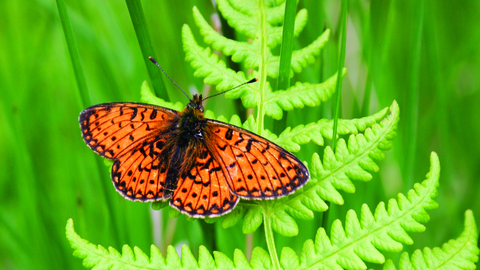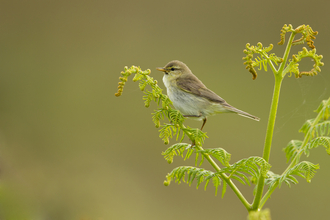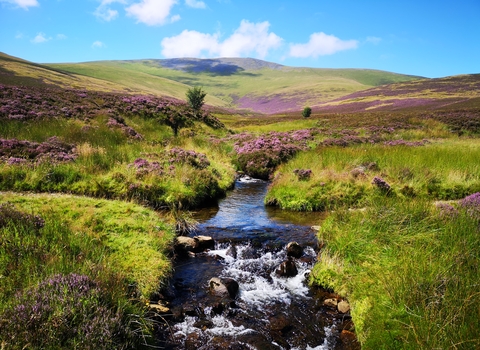
© John Morrison

Devil's bit scabious © Amy Lewis

Small pearl bordered fritillary © Tom Marshall
Location
OS Map Reference
OS 1:50,000. Sheet no. 89Wellington Farm:
Grid Reference: NY 107 294
what3words ///shudders.targeted.flask
Entrance:
Grid Reference: NY 103 290
what3words ///laws.jaunts.digested
Getting here
By car:
From the Lamplugh roundabout (known locally as the Oakhurst roundabout) joining the A5086 and the A66, take the turning to Mitchell’s Auction Mart. After 50m take a left and follow this road for 700m to The Old Stack Yard Tea Rooms, Wellington Farm. The nature reserve is a 300m walk along a farm lonning (short path) and a further 400m walk through a farm field to the entrance.
By bicycle:
The reserve is 2.5km/1.5 miles from National Route 71 Sea to Sea (Coast2Coast).
By Public transport:
Buses run from Cockermouth and Whitehaven to Eaglesfield.
View on What3Words
Know before you go
Dogs
When to visit
Opening times
Open all year roundBest time to visit
April to AugustAbout the reserve
Wildlife highlights
Many common species of tit can be seen in the woods and the rarer willow tit also breeds here.
- In spring - listen out for warblers in spring as they return from Africa to breed: whitethroat, blackcap, chiffchaff. Willow, garden, grasshopper and sedge warblers can all be seen. Cowslips, early purple orchids and cuckoo flower are in abundance.
- In summer - Ringlet and small pearl-bordered fritillary butterflies can be seen on sunny days on the wet grassland. You can find orange tips, peacock and even dark green fritillary butterflies. Various damselflies and dragonflies species are commonly seen including common blue and large red damselflies as well as southern and common hawkers.
- In autumn - devil's-bit scabious is flowering, common darter dragonflies soak up late sun. Look out for redpoll and redwing arriving.
- In winter - flocks of fieldfare and redwing feed on the hawthorn berries and roe deer and brown hare seek refuge in the vegetation.
An interesting landscape of diverse habitats
Dubbs Moss is a naturally damp hollow surrounded by farmland. A peat layer beneath the central area suggests it once had a small tarn, which over the past 10,000 years has become in-filled with plant matter.
Today, birch woodland, an area of damp fen grassland plus an area of dry herb-rich grassland with lichen-encrusted hawthorn scrub provides a wide-ranging landscape that attracts many different plants and animals.
The western part of the nature reserve is covered by relatively recent birch woodland. There is an area of damp fen grassland and a higher area of dry herb-rich grassland with hawthorn scrub. This diversity of habitats gives rise to a rich species mix.
Plantlife
Varied habitats on the reserve ensures that there is a succession of plant species throughout the spring and summer.
In spring the herb-rich grassland is covered with cowslip and early purple orchid which give way to commmon twayblade, betony and knapweed later in the year.
If you search hard you might find the uncommon adder's tongue fern in the grassland.
In the wetter fenland area you can find yellow flag iris, ragged robin, angelica and devil's-bit scabious.
The shade cast by the trees, in the woodland area combined with the wet ground, give ideal conditions for mosses and ferns to flourish.
Male fern, hard fern and narrow buckler fern and a variety of mosses thrive here.
What makes Dubbs Moss so special?
Shaded by the trees, the wet ground provides ideal conditions for mosses and ferns to flourish; male-fern, hard-fern and narrow buckler-fern all thrive.
By contrast, the vibrant colour of yellow iris, valerian, common spotted orchid and devil’s-bit scabious pepper the fen grassland.
Where this rises to dry grassland, early-purple orchid, cowslip, common knapweed and great burnet continue the show.
Keeping it special
In winter we graze the land with Welsh mountain ponies to preserve the range of plants that are a magnet for pollinating insects and we carry out management to maintain the scattered scrub on the eastern side of the nature reserve.
Recent history
Dubbs Moss was purchased by Cumbria Wildlife Trust in 1972.
Species
- Small pearl-bordered fritillary
- Devil's-bit scabious
- Fieldfare
- Blackcap
- Redwing
- Ringlet
- Sedge warbler
- Garden warbler
- Willow warbler
- Whitethroat
- Coal tit
- Long-tailed tit
- Roe deer
- Chiffchaff
- Grasshopper warbler
- Cowslip
- Early purple orchid
- Cuckooflower
- Orange-tip
- Peacock
- Dark green fritillary
- Common blue damselfly
- Large red damselfly
- Southern hawker
- Common Hawker
- Common darter
- Brown hare
- Common twayblade
- Common knapweed
- Adder's-tongue fern
- Yellow iris
- Ragged-robin
- Wild angelica
- Male-fern
- Red valerian
- Common spotted-orchid
- Great burnet
Habitat
Contact us
Environmental designation
Upcoming events at Dubbs Moss Nature Reserve
If there are any upcoming events at Dubbs Moss Nature Reserve we'll show them to you below.
Did you know?
At 7.4 hectares, the nature reserve might be small but over 180 plant speciies have been recorded here.

Support our conservation work on this nature reserve,
and protect Cumbria's wildlife & wild places.




